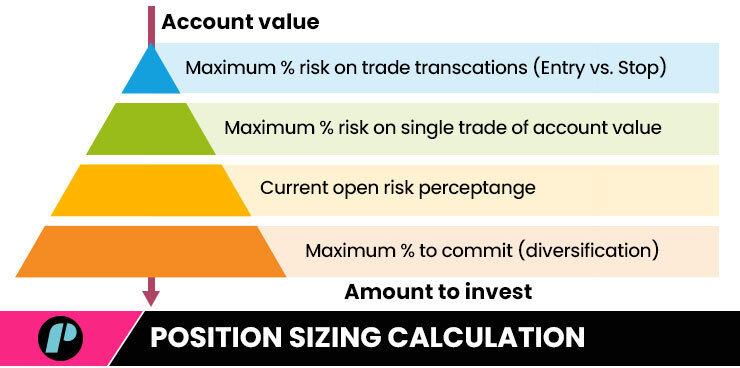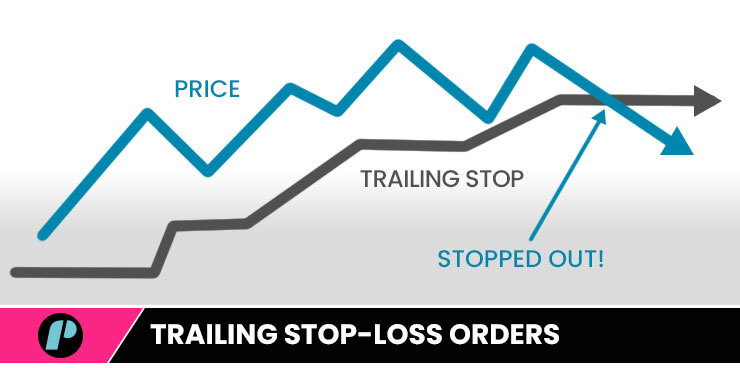
Introduction
As a day trader, effectively managing trades is a critical component of gaining consistent profits in the stock markets. Trade management involves making decisions about when to enter and exit trades, as well as how to handle various aspects of trade execution such as position sizing, risk management, and profit taking.
In this new article, we will dive into some of the best trade management techniques that day traders can utilize to optimize their trading performance.
Understand the Core of Trade Management
At its core, trade management refers to the decision-making process that follows the entry into a trade. It’s the methodical approach to controlling a trade from start to finish, which includes the management of risk, the adjustment of positions, and the eventual realization of profits or losses.
Key Notes
- Trades Managements includes all decisions that influence the trade made before and after opening it.
- Trade Management is a key and vital part of trading.
Always plan ahead
Before diving into the intricacies of trade management, it’s essential for day traders to establish a comprehensive trading plan.
Ensure you create a trading plan that serves you in:
Defining your trading strategy, setting clear entry and exit criteria, determining risk tolerance, and outlining profit objectives.
Remember: a well-thought-out trading plan serves as a roadmap for your trading activities and provides a framework for effective trade management.
Manage your risk
One of the key components of trade management is risk management.
Day traders should employ strategies to protect their trading capital and minimize potential losses wherever possible. This includes setting stop-loss orders to limit downside risk, calculating position sizes based on a predetermined percentage of account equity, and, if possible, diversifying trades across different asset classes or instruments.
Remember: the cornerstone of effective trade management lies in the meticulous control of risk.
Set your Profit Targets
Having clear profit targets helps to take the emotion out of the decision-making process. Day traders should identify potential exit points before entering the trade, which may be based on price levels, technical indicators, or changes in market behavior.
Evaluate every trade Risk-Reward Ratio
Before entering any trade, a prudent day trader must assess the potential risk in relation to the potential reward that trade can offer. A commonly adopted rule of thumb is the 3:1 risk-reward ratio. This ratio ensures that even if only a third of your trades are successful, you could still break even or remain profitable.
Remember: A skewed Risk-Reward Ratio might lead to losses even when most executed trades are successful.
Select the Appropriate Position Sizing
Allocating the correct amount of capital to a trade is arguably the most important part of trade management.
The ‘2% rule’, where no more than 2% of the trading capital is risked on any single trade, is a recommended practice and one used by many professional traders.
Remember: Proper position sizing prevents a trader from suffering a significant blow from a single losing trade.
Set a Stop-Loss Orders
Stop-loss orders are a critical tool for day traders to manage risk.
By setting stop-loss levels at strategic positions, traders can limit potential losses and protect their trading capital. Stop-loss orders should be placed based on technical analysis, support and resistance levels, and volatility considerations.
Utilizing a stop-loss order often represents a trader’s first true line of defense.
Remember: the stop-loss be set at a level that is consistent with the trader’s risk tolerance and the volatility of the stock.
Consider using Trailing Stops
Trailing stop-loss orders are dynamic risk management tools that adjust automatically as the price of an asset moves in the trader’s favor. This allows day traders to lock in profits as the trade progresses while giving the position room to run in a trending market. Trailing stops can be based on fixed price increments or percentage movements.
Key Notes
Manage your risk:
- Set your profit target
- Evaluates Risk Reward ratio.
- Get your position sizing right.
- Use stop loss and consider using trailing stop orders.
Maximize your profit.
Consider Scaling In and Out
Scaling into and out of positions can be an effective trade management technique for day traders.
Instead of entering a full position at once, scaling in involves gradually building a position over time as the trade moves in the desired direction.
Scaling out, on the other hand, involves taking partial profits as the trade progresses, thereby locking in gains while allowing the remaining portion of the position to potentially capture further upside and higher gains.
This technique involves entering and exiting a position in increments, not all at once. It allows a trader to capitalize on a stock’s favorable movement by progressively adding to a winning position (scaling in) and to realize profits or limit losses by gradually closing a position (scaling out).
Be ready, flexible, and agile
Agility in responding to sudden market changes is imperative for successful trade management.
Stay Informed
Keep on top of news events, market sentiment, and other external factors that can influence stock prices. A day trader must be ready to adjust quickly to new information.
Day traders should try to stay up to step with market conditions and news events that could impact their trades. Monitor economic releases, company earnings reports, geopolitical developments, and other market-moving factors, traders can adjust their trade management tactics in response to changing circumstances.
Be ready to switch trading techniques if needed
Sticking rigidly to an initial strategy can be detrimental if the market dynamic shifts. Adapt your tactics in response to real-time market conditions – if a strategy isn’t working, be prepared to change course.
Continue Learning and Review
Review past trades to understand what worked and what didn’t. This feedback loop could be crucial in refining your trade management techniques.
Key Notes
Maximize your profit and keep on top of things.
- Consider scaling in and out of trades.
- Stay informed.
- Be ready to switch trading techniques.
- Keep reviewing and researching.
Get your trading psychology right and also remember these last few important things!
Trade management is not solely about technical and fundamental analysis and lines on a chart; the mental discipline that trading requires plays a critical role in determining success and failure so… Remember these pointers:
Emotional Control is Key
A trader must learn to manage their emotions. Fear and greed can lead to impulsive decisions, whereas a composed mind allows for rational trade management.
Patience is a Virtue
Good trades come to those who wait.
Patience in waiting for the right trade setup is as essential as the patience to let profitable trades run their course.
Luck lacks consistency
Relying on consistent trade management principles is more dependable than trying to hit home runs on every trade and consistency leads to long-term success.
Trade Management – Conclusion
We all know that stock day trading requires much more than just buying low and selling high; it entails a comprehensive approach to managing each trade with precision.
By executing rigorous risk control, focusing on profit maximization, staying flexible, and maintaining a disciplined mindset, a day trader can turn a few good trades into consistency and consistency into success. By following the above twelve pointers, we hope you’ll find it all a lot easier.
Hope this helps.
If you liked this post make sure to share it!








